The Berkshires Bowling Alley that Inspired "The Big Lebowski"
It’s been 36 years since the release of The Big Lebowski, the irreverent cult comedy by Joel and Ethan


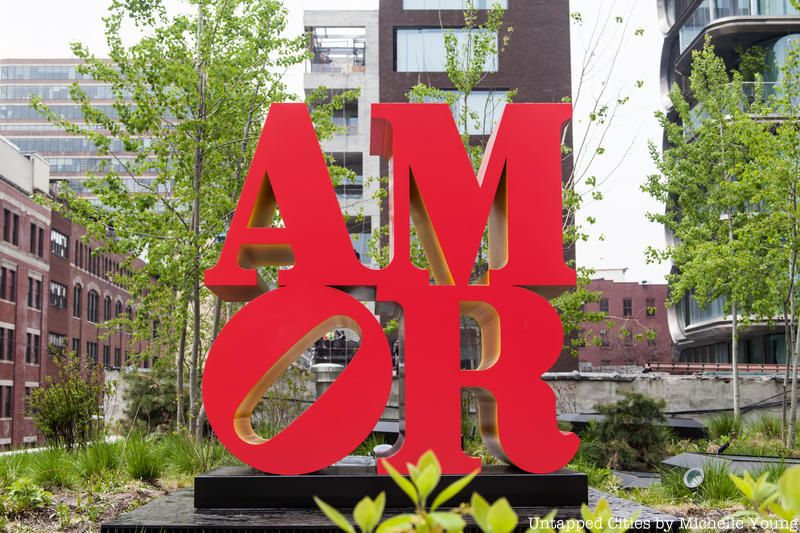
Occupying the area west of 6th Ave from 14th to 34th Street, Chelsea has become one of New York City’s burgeoning food and art hubs. Not only is the neighborhood tied to many historic and cultural moments in our city’s history, it’s also filled with plenty of galleries, restaurants, parks, and sites.
If you ever find yourself strolling through, check out our guide of 22 must-visit spots in this trendy area, featuring a few hidden gems to the city’s most popular and fantastic creations.
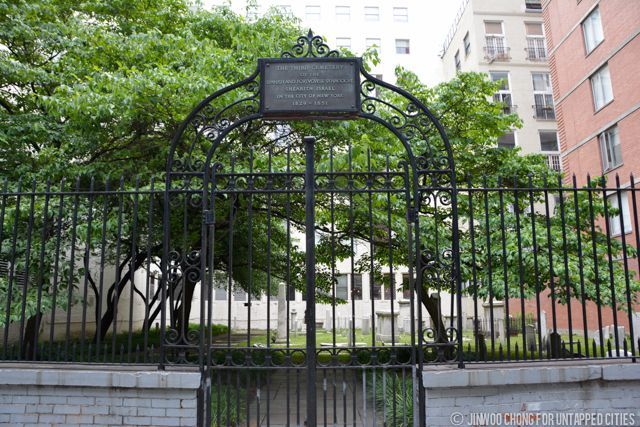
Over shadowed by the surrounding tall buildings is Third Cemetery of the Spanish and Portuguese Synagogue. This green respite on 21st Street, fronted by wrought iron gates is the third in its name because the cemetery of the religious organization had to move four times since the founding of the religious organization, the oldest Jewish congregation in North America, in 1654.
The synagogue’s first location were rented quarters in Mill Street and its first cemetery was possibly located in a corner of the African Burial Ground, though no one is completely certain. Since then, the cemetery has moved from Chatham Square in 1682, to 11th Street in 1823, and finally to its present-day location just west of Sixth Avenue, in 1829.
There are 250 souls buried in the 21st Street location, but since New York City prohibited burial in Manhattan below 86th Street in 1851, the synagogue moved to Queens, leaving behind remnants of its three former locations, including this one in Chelsea.
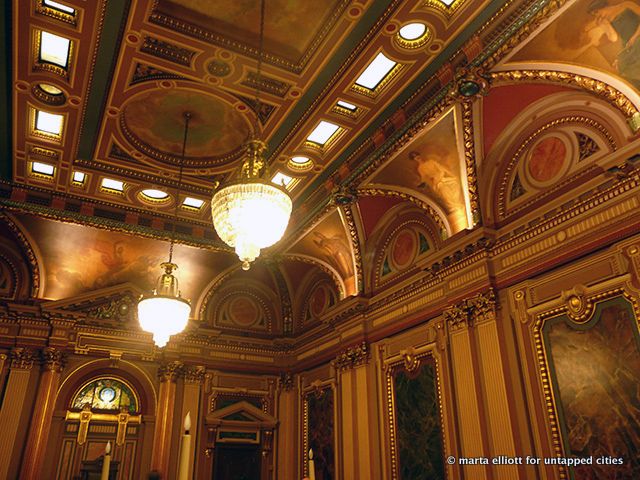
We’ve always been curious about the Freemasons, and even more so about the Grand Lodge of New York situated on a bustling 23rd Street in Chelsea. The Grand Lodge of New York (more formally the Grand Lodge of Free and Accepted Masons), while part of a secret society, boasts a large flag in the middle of Manhattan. The society insists that their big secret is that they have no secrets.
An inside tour we once took of the building offered clues into the society, where we learned that they use tons of symbols not to be secretive, but to communicate quickly and to inspire and educate their members.
The Masonic Hall was built in 1913 by architect Harry P. Knowles, a Master Mason himself, but the current lodge meeting rooms were restored by the interior restaurateur Felix Chavez from 1986 to 1996. We were shocked to learn that each strikingly ornate room is actually all painted plaster: from imitation stone to reliefs to frescoes, we were certainly tricked by Chavez’s manipulation of plaster to resemble high quality materials.
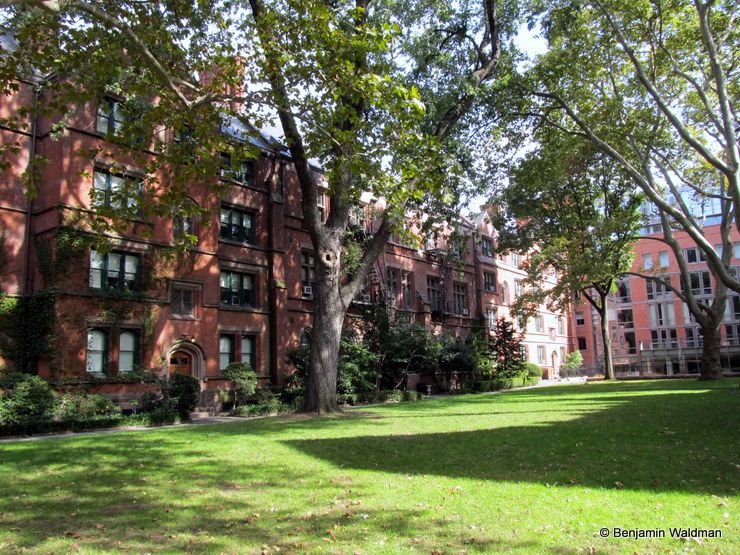
Chelsea Enclave to the far right abutting the Eastern half of the close
Situated on a superblock bounded by 21st Street to the North, 20th Street to the South, 9th Avenue to the East and 10th Avenue to the West is the General Theological Seminary. It was established in 1817 as a training ground for future Episcopalian priests, and in 1827 construction began on the Seminary’s Chelsea campus.
This campus was enriched in the 1880s by a series of graceful Neo-Gothic structures designed by Charles Haight, which ring the perimeter of the institution’s serene inner quadrangle. This Oxford-style complex is one of the hidden treasures of the city. But there is more to the General Theological Seminary than that.
The Keller Library, formerly the St. Mark’s Library, has a first edition of the Authorized King James Version Bible and a Coverdale Bible (1535), the first complete Bible printed in English, on display. Not only that but Tim Burton’s The Nightmare Before Christmas was written onsite at the Seminary.
This landmarked building is one of the oldest campuses in the city and open to the public for viewing during business hours.
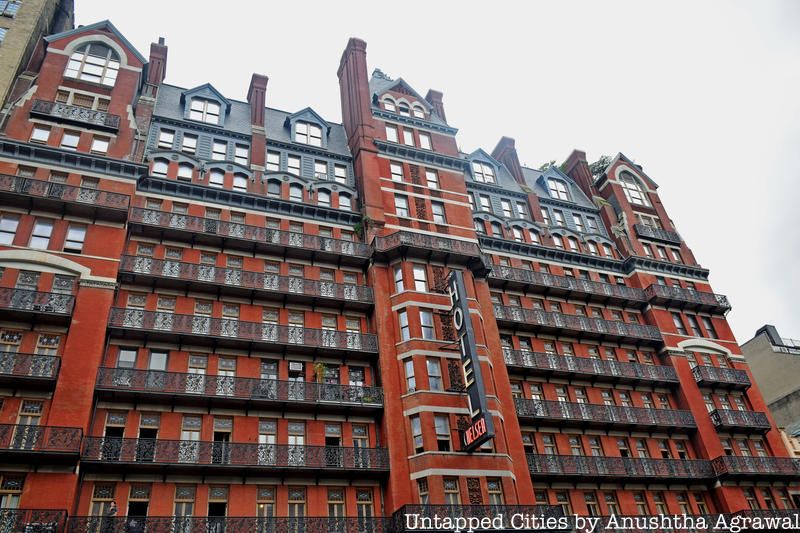
For over 100 years the Chelsea Hotel has served some of the world’s greatest poets, musicians, and artists of all time as the city’s counter-cultural landmark. Not your average New York City hotel, notable guest, sci-fi author Arthur C. Miller recalled in his memoir that you could get high from solely the marijuana fumes lingering in the elevator of the hotel.
The hotel has a rich history in the city as the creative site of many famous artists. In fact, Bob Dylan changed his name from Bob Zimmerman in honor of poet Dylan Thomas, a Chelsea Hotel guest. Arthur C. Clarke also revealed he wrote the screenplay for 2001: A Space Odyssey in his room at the hotel in the 1960s.
The hotel was shut down in 2011, but is set to reopen in 2018. Learn more about the Chelsea Hotel in our Top 10 Secrets.
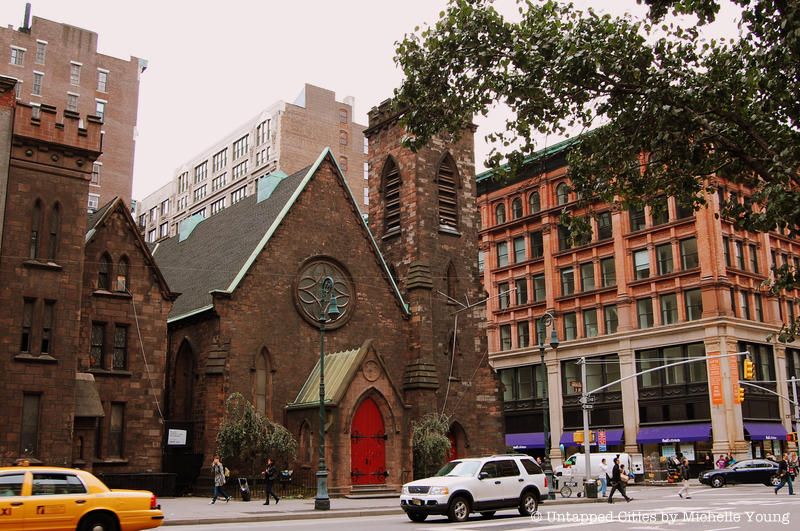
Located on 20th Street and 6th Ave, this church has gone through many incarnations, some not what you would expect. This Gothic Revival brownstone building, built in 1844-50 by Richard M. Upjohn, architect of Wall Street’s Trinity Church, began as the Episcopal Church of the Holy Communion.
In the ’80s and ’90s, it housed one of Peter Gatien’s infamous Limelight Clubs, where it became the locus of torrid criminal behavior, including an incident when a club promoter murdered and dismembered one of Limelight’s resident drug dealers.
After being convicted of tax fraud, Gatien shut down the clubs, and the church has gone through one business after another ever since. It was a mall that opened in 2010 after a $15 million renovation, but it closed after only a year. It was then replaced by a smaller collection of shops. The David Barton gym has occupied one floor for the past several years, but its lower level has constantly been in flux.
The space has even been called cursed, due to its legacy of bad luck. First it housed a gastro-pub, then a French restaurant, then a speakeasy-style bar, all of which failed to last more than a year.
Today, the space is occupied by Jute Lan Club, an upscale Chinese restaurant, and Limelight Fitness.
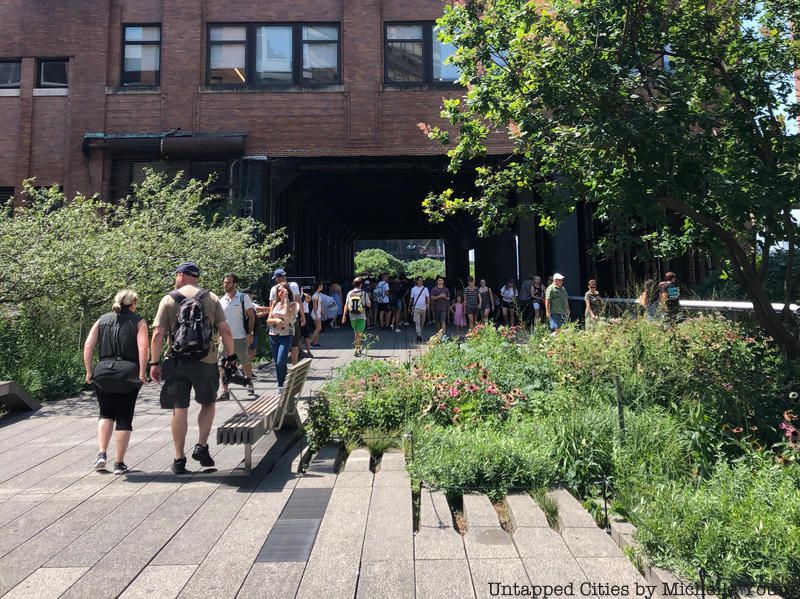
One of the most popular attractions in Chelsea, and New York City, the High Line, an elevated park on an old elevated railroad line has since 2009, been hailed as the savior of declining west Chelsea, a neighborhood that is now a burgeoning food and art gallery hub of New York City.
Inspired by the Coulée Verte René-Dumont, a repurposed railway in Paris, the High Line boasts plenty of greenery, public art, and eateries. The High Line has also spawned a worldwide trend of elevated parks, many major cities are taking a leaf out of New York’s book.
After years of planning and construction, the elevated railroad became an elevated park, attracted millions to its picturesque views, and revitalized the entire neighborhood’s economy and real estate. While the tourist attraction creates a lot of congestion on the slim park, it is definitely worth a visit, particularly during the weekday when the crowds are not as large.
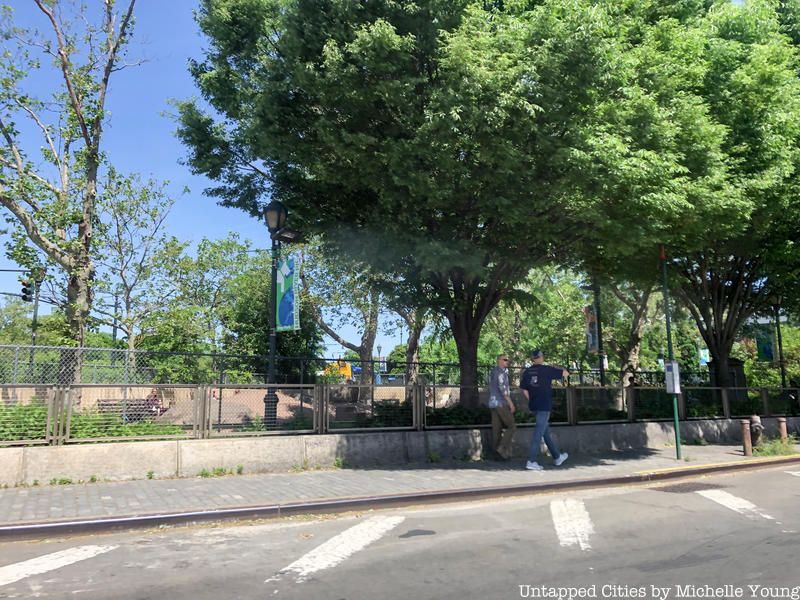
Acquired by the city in 1907, Chelsea Waterside Park has gone through several transformation to become the park is today. Situated to the north of the Chelsea Piers sports complex, It includes a dog park at the south end, a multi-use recreational field in the northwest corner, a basketball court to the north, and a children’s play area in the northeast quadrant.
The central portion of the park includes a pedestrian walkway flanked by new lawns for some light recreation and includes lush planting beds filled with various flowers and plants.
Chelsea Park is one of the most popular and widely used parks in lower Manhattan. Acquired by the Park Department 100 years ago, it offers basketball courts, baseball diamonds, handball courts, multi-purpose asphalt surfaces, and plenty of lounging space.
The first playground here was built in 1910, and was designated an open space for the people living in the crowded tenements the area, while the then newly formed Board of Recreation organized competitions for thousands of spectators to participate and watch. The Chelsea Memorial Committee donated to the park its most notable statue, a World War I memorial called the Chelsea Doughboy Statue. It still stands today.
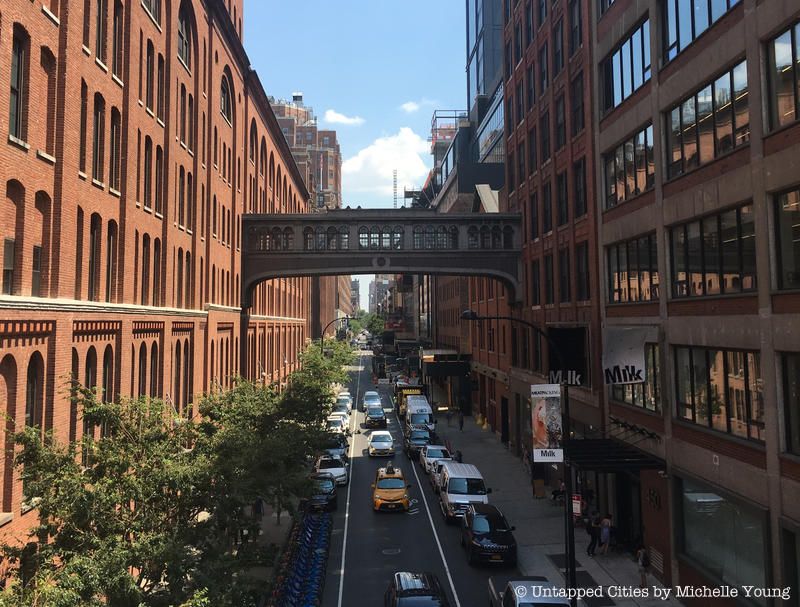
Prior to the construction of the High Line’s elevated tracks, the New York Central freight line ran at street level, giving the stretch of Tenth Avenue the dubious nickname of Death Avenue. This corridor earned the moniker due to the consistent, and almost always gruesome, incidence of trains colliding with people along the busy thoroughfare, often resulting in fatalities. Before the trains were eventually elevated, the New York Central Railroad hired men on horseback armed with red flags to ride in front of the trains to signal its arrival. These men came to be known as The West Side Cowboys.
From paintings and sculptures to ritual objects dating back to the 2nd century, The Rubin Museum is a treasure trove of works that specifically highlight the art of the Himalayas, India and other neighboring places. Its permanent collection alone includes over 3,800 objects of Tibetan art that span across 1,500 years. It now occupies a building that formerly housed fashion department store, Barneys New York — in fact, the museum’s six-story spiral staircase was left intact following the transition, and now serves as a remnant of its past life.
One of a a select group of specialized fashion museums, The Museum at FIT’s mission is to “advance knowledge of fashion” through its various exhibitions and public programs. It was founded in 1969, and currently holds a permanent collection of roughly 50,000 garments and accessories dating from 18th century to present day. Alongside its three galleries — one of which is dedicated to student and faculty exhibitions — the museum is comprised of a workshop, conservation laboratory and photographic studio, among other things. Its current exhibitions include Expedition: Fashion from the Extreme, which highlights fashion inspired by clothing made for survival, and Force of Nature, which focuses on how the natural world has inspired fashion designers.
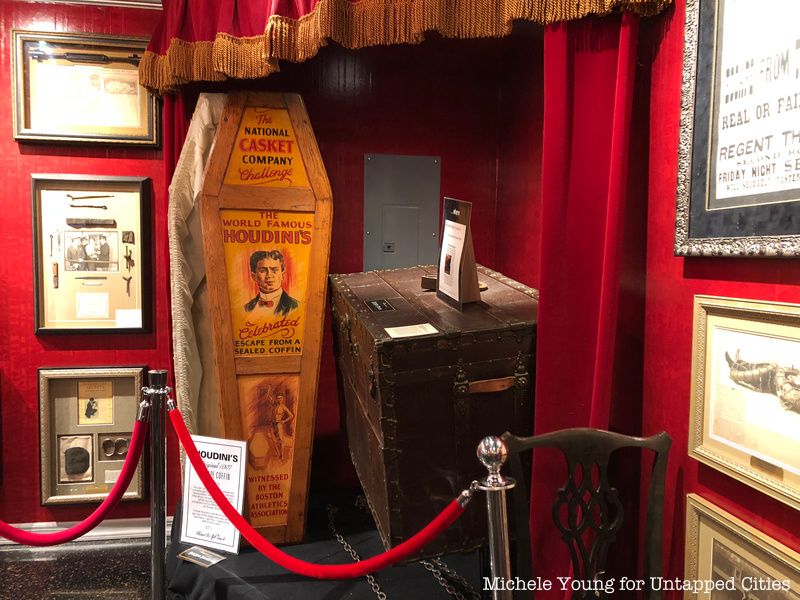
Have you ever wondered what Harry Houdini’s secrets were? The Houdini Museum in Fantasma Magic near Penn Station houses the actual tools and tricks that the great magician used to escape cages, coffins, and straight jackets. Other objects include Houdini’s clothing, original posters, and even an animatronic Houdini who escapes from a straitjacket hanging from the ceiling right before your eyes.
Check out 10 More Obscure NYC Museums and visit the Houdini Museum at 421 7th Ave, 3rd floor.
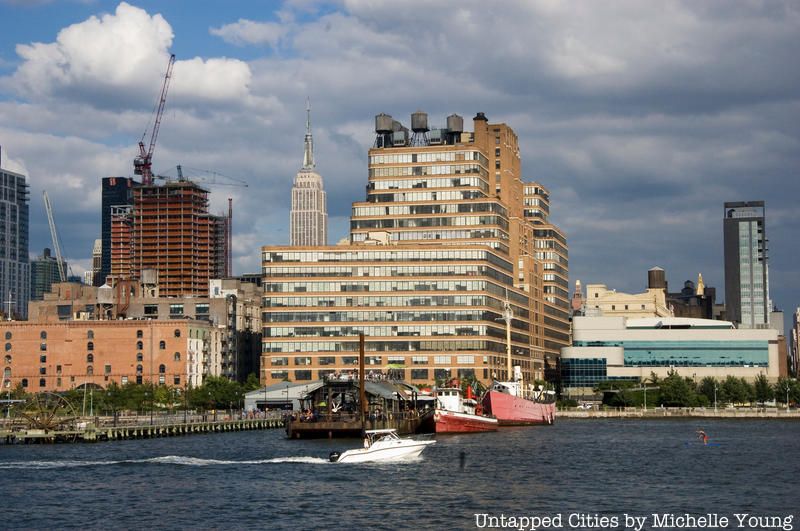
Sitting atop the freight transport center of the city is one of New York City’s oldest ‘modern’ buildings. The Starrett-Lehigh Building, aNew York City landmark and part of the West Chelsea Historic District, was constructed in 1931 as a freight terminal, warehouse, and office building for the Starrett real-estate interests and the Lehigh Valley Railroad.
Located right on the Hudson and occupying a whole city block, it was the ideal place to receive large shipments. Freight cars came right into the building to unload their wares, and were lifted in 30 foot elevators to the upper floors (now used to transport food trucks straight into the building). With its streamlined design, consisting of 8 miles of continuous glass in steel-encasement windows, the building is a striking example of the ’30s International Style.
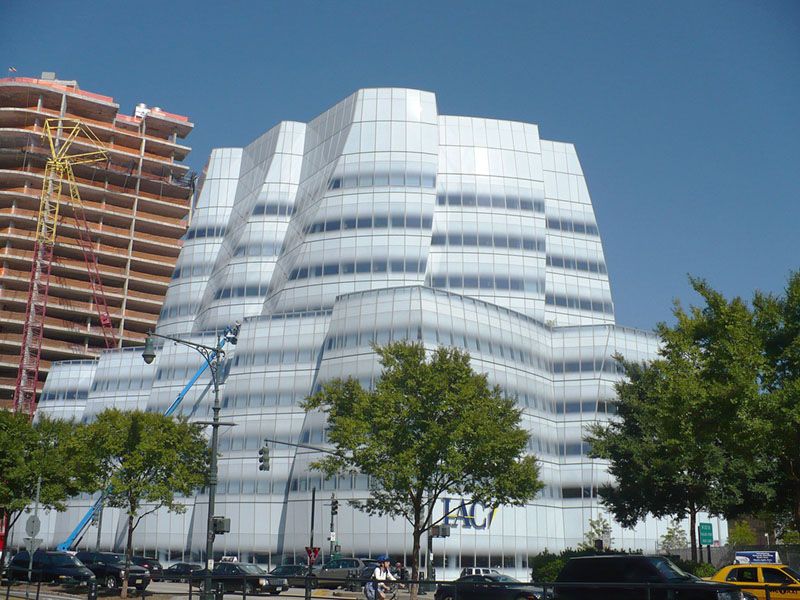
Image via Wikimedia: ~~×α£đ~~es
Frank Gehry’s first New York building, the IAC Building, has often been likened to a ship setting sail or an iceberg. It’s an excellent example of the way an architect like Gehry takes inspiration from the building’s surroundings when designing.
Constructed in the deconstructivist style, the IAC building is divided into various sections that appear twisted together like the cells in a beehive. With its smooth-glass facade and full-height windows that fade from clear to white, it’s unsurprising that the 10-story edifice was once described by Vanity Fair as one of the world’s most attractive office buildings.
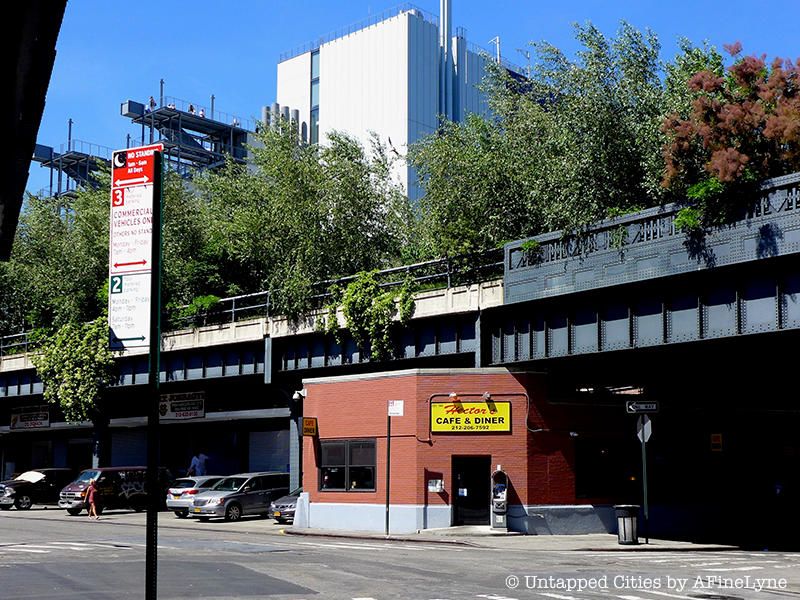
While Chelsea boasts plenty of coffee shops in the area, Hector’s Diner is a hidden gem worth the visit. Currently, it sits nestled under the High Line, surrounded by chic boutiques and expensive eateries, a stone’s throw from The Standard Hotel. It is also the place where all the diner scenes for Taxi Driver starring Robert DeNiro were filmed and where many of the Law & Order episodes were shot.
In the 1930s, the Meatpacking district produced about a third of the country’s meat. Hector’s used to open at 2 am for employees clocking in for their shifts. Though Hector, the original owner, is long gone, the diner is still open, proven to be one of the city’s sturdiest businesses.
Located in the heart of the flower district, ALT – A Little Taste is a quaint, European, boutique-style cafe that serves artisanal coffee and fresh pastries, which are delivered by some of New York’s finest bakeries. The fare, however, is not the only thing that makes ALT a must-visit: those with a taste for design will appreciate the rustic, elegant interior of the shop.
Plus, ATL also houses a showroom behind the cafe that features a curated collection of carpets, home furnishings and more. Drop by for a freshly roasted cup of coffee and peruse through the selection while you’re at it.
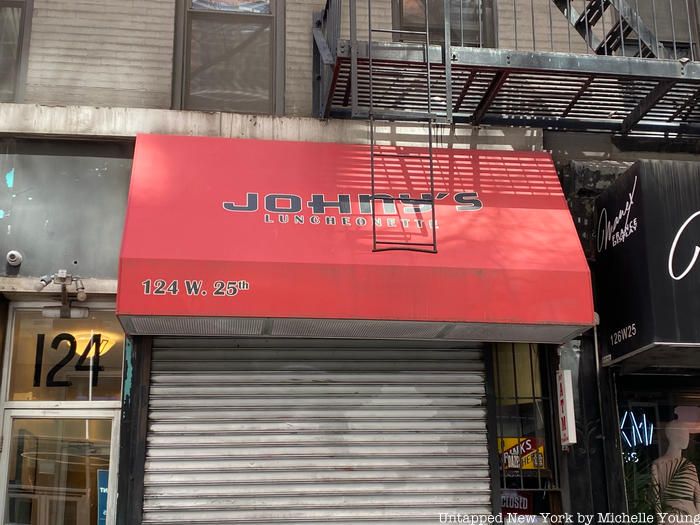
Johny’s on 124 W 25th Street is a classic, no-frills luncheonette that has flourished solely on the merits of its reputation. Signified by an old, blue awning, Johny’s serves a number of signature sandwiches that, though not as cheap as they used to be, are still a bang for their buck. Specialties include a tuna and feta cheese combination sandwich called the Dynamic Dez as well as the Famous Sloppy Johny, which features grilled chicken, bacon, onions, cheese and coleslaw on a hero. You can also buy shirts and other neat memorabilia online.
A few years back, Chelsea’s Hauser & Wirth gallery opened in a temporary space on 18th Street, where it was housed inside a former roller disco space. Its inaugural exhibition showcased work from Swiss artist Dieter Roth, his son Bjorn and grandsons Oddur and Einar. Among other interesting installations, the exhibit includes the Roth New York Bar — an art installation/coffee bar/actual bar crafted from salvaged and scavenged parts.
Hauser & Wirth has since moved to West 22nd street, but lucky for imbibers, the Roth Bar has survived the relocation. It’s bigger and better, but still maintains its original grunge thanks to its odd arrangement of metal parts, junk electronics, plastic flowers and more.
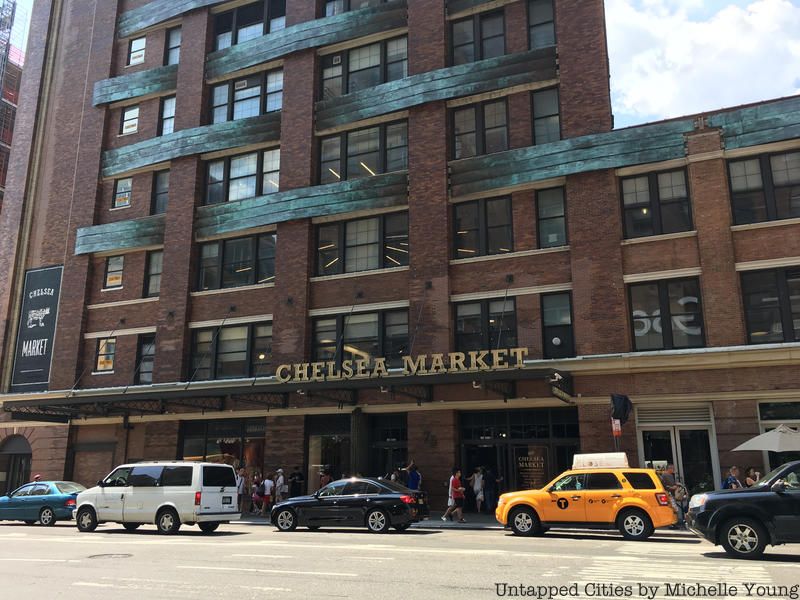
A combination of a super-mall, luxury showcase, restaurant hub, and industrial office space, Chelsea Market and its bustling interior always feel a bit like the holidays. There you’ll find businesspeople sipping Intelligentsia coffee next to tourists peeling apart lobsters next to focused shoppers looking to score their next great purchase. Fountains bathed in neon light flow next to cheery bakeries and gelato shops, hip jewelry stores glitter, and unmarked doors promise the unknown.
Located next to the High Line in the center of Chelsea, the Market has many of its own stories to tell. A combination of 20 buildings, it was where the Oreo cookie was invented when Nabisco had a factory there, and today includes a hidden restaurant underneath called The Tippler. With plenty of options for dining and shopping, Chelsea Market is a great place to spend a few hours while in Chelsea.
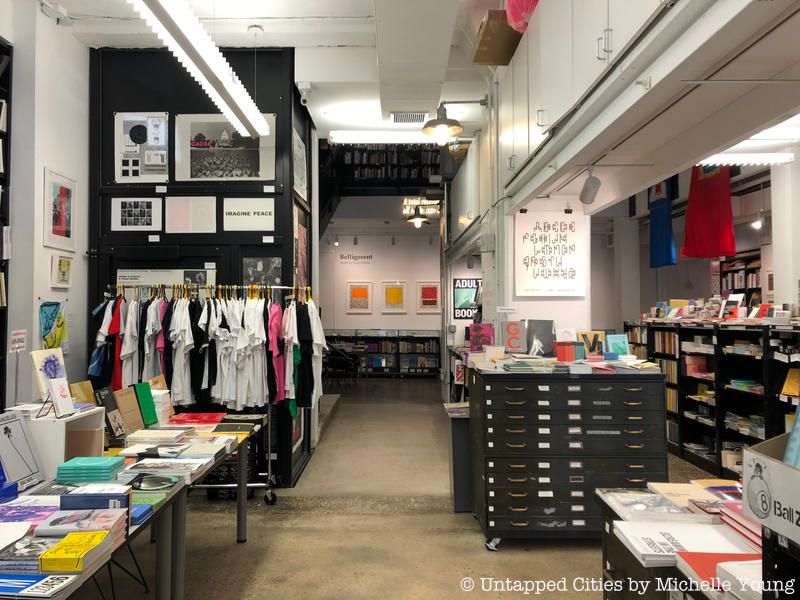
On October 15, 2015 Printed Matter, opened its doors to its new location on 231 Eleventh Avenue at 26th Street. Founded in 1976, the non-profit first opened their doors on Lispenard Street in Tribeca. Known for their open submission process, Printed Matter allows artists and indie publishers to submit books for sale in their shop. The bookstore circulates over 32,000 publications annually on behalf of the artists and small presses, and in addition, offer support services and activities including art installations, talks, book launches and performances.
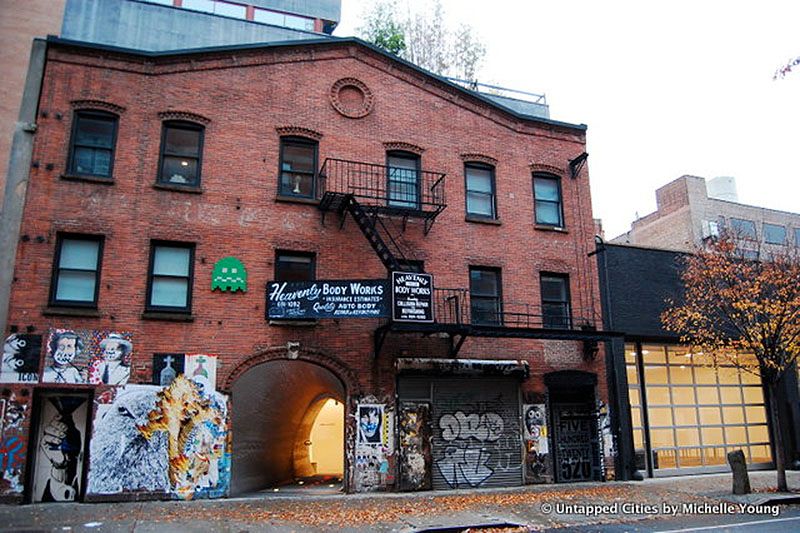
Comme des Garçons, which translates to “Like Boys” in French, is a Japanese fashion label founded by Rei Kawakubo. The Tokyo-based company has boutiques around the world, and its Chelsea is particularly stunning. The graffiti and art covered building housing the boutique features a futuristic tunnel that gives way to an equally stunning, gold interior. Whether you’re there to shop or to appreciate its urban architecture, Comme des Garçons is worth a pit-stop.
Next, check out more of our must-visit spots in NYC neighborhoods.
Subscribe to our newsletter